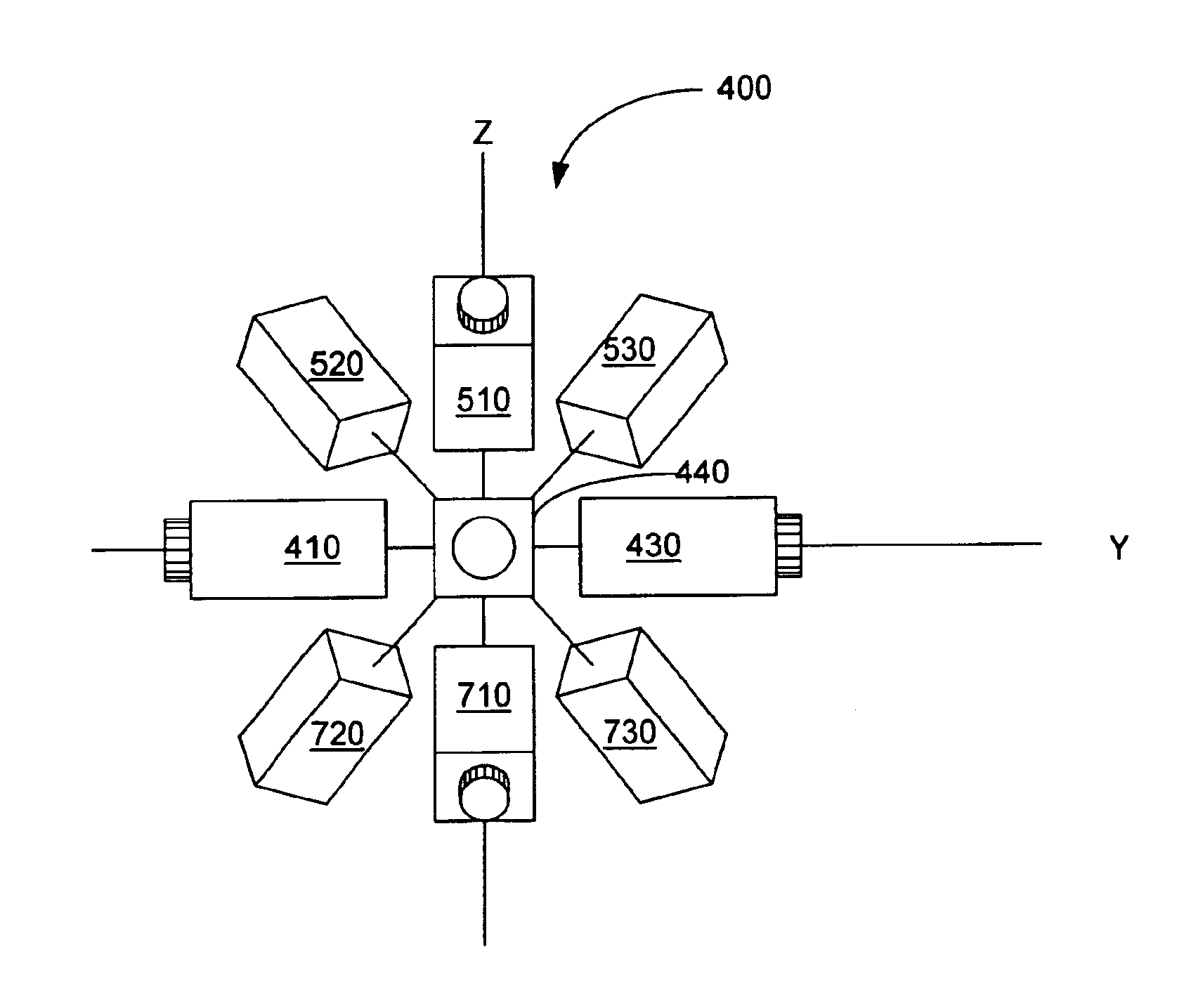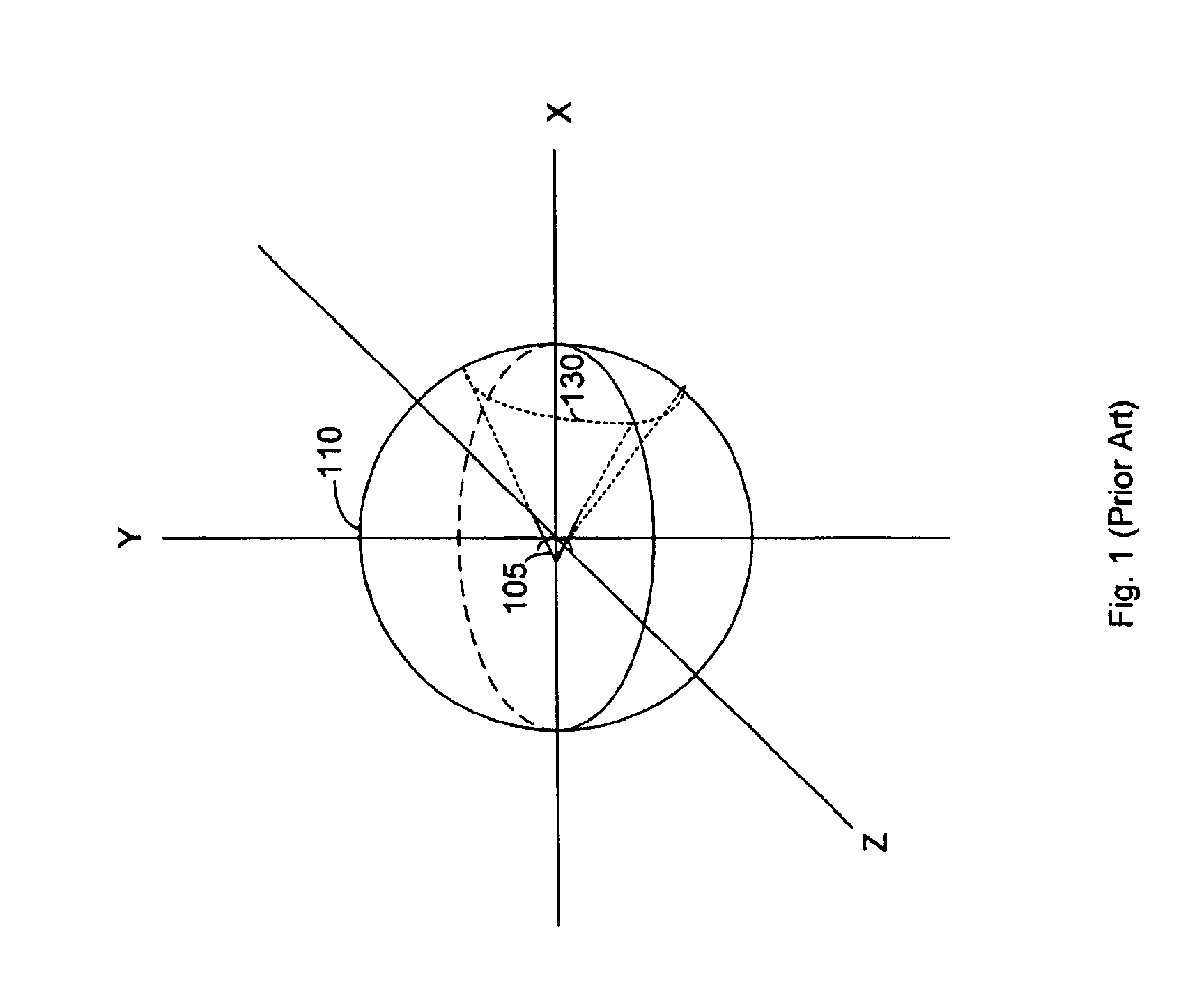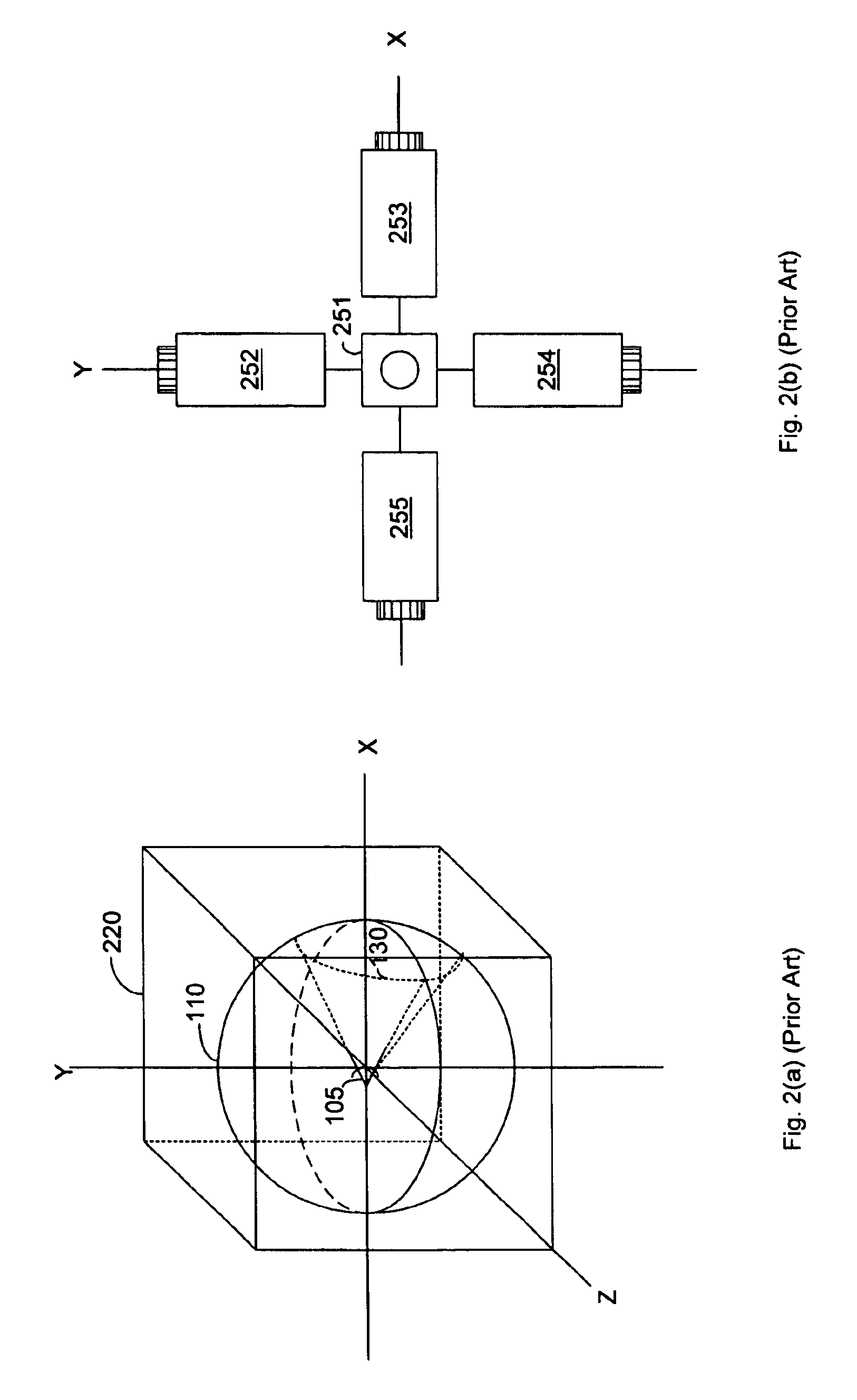Outward facing camera system for environment capture
a camera system and environment technology, applied in the field of image capture, can solve the problems of wasting time and resources, unable to capture the environment of viewers with hemispherical lenses, and two cameras providing very limited resolution for capturing the environment of viewers, so as to achieve efficient capture of environments
- Summary
- Abstract
- Description
- Claims
- Application Information
AI Technical Summary
Benefits of technology
Problems solved by technology
Method used
Image
Examples
Embodiment Construction
As explained above, camera systems for environment mapping should have a spherical field of view to capture the entire environment around a viewer. Symmetrical camera systems based on regular polyhedrons are inefficient because conventional cameras typically produce rectangular images. Thus, much of the image data captured by the cameras of symmetrical camera systems are not used by the environment mapping system.
In accordance with the present invention, asymmetrical camera systems are adapted to utilize a greater proportion of the image data from each camera as compared to symmetrical camera systems, which are based on regular polyhedrons. FIGS. 4, 5(a), and 6 show various parts of a camera system 400 in accordance with one embodiment of the present invention. Camera system 400 includes a plurality of equatorial cameras 410, 420, 430, and 440. In camera system 400, four equatorial cameras are used. However, other embodiment of the present invention may use a different number of equ...
PUM
 Login to view more
Login to view more Abstract
Description
Claims
Application Information
 Login to view more
Login to view more - R&D Engineer
- R&D Manager
- IP Professional
- Industry Leading Data Capabilities
- Powerful AI technology
- Patent DNA Extraction
Browse by: Latest US Patents, China's latest patents, Technical Efficacy Thesaurus, Application Domain, Technology Topic.
© 2024 PatSnap. All rights reserved.Legal|Privacy policy|Modern Slavery Act Transparency Statement|Sitemap



